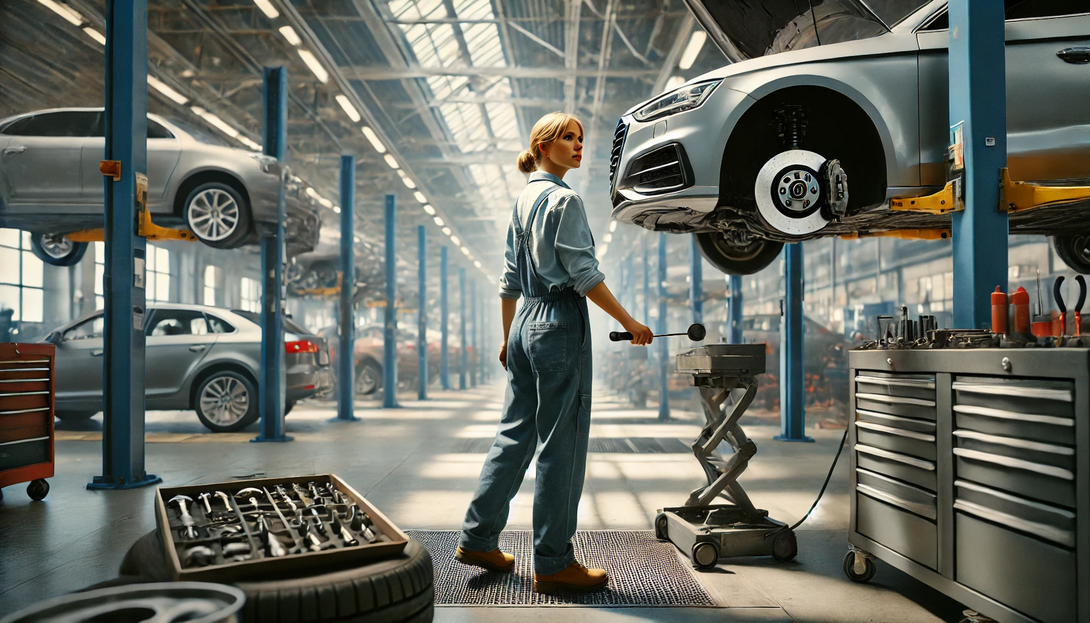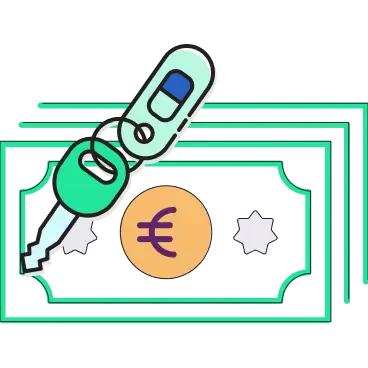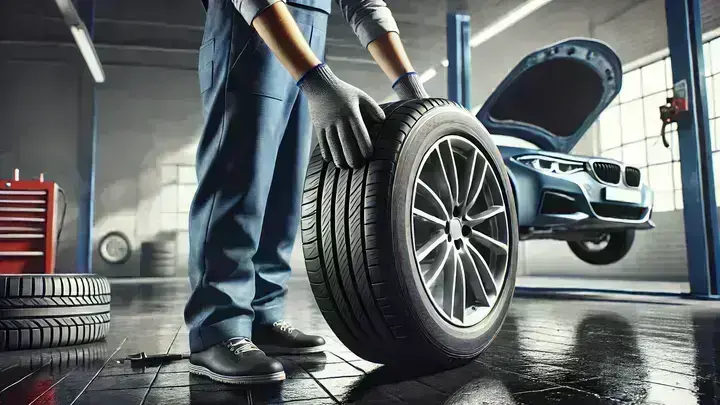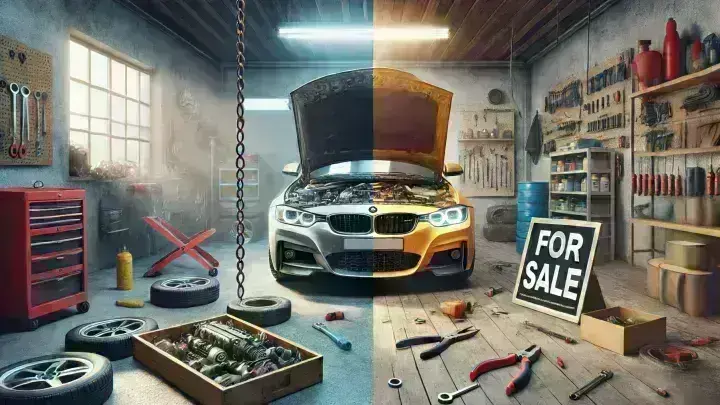Bleeding the brakes: Everything you need to know at a glance
Bleeding brakes: Step-by-step checklist and important tips
Functioning brakes are essential for the safety of your vehicle. However, air can get into the brake system over time – whether due to repairs, brake fluid replacement or simply wear and tear. Air in the brake system causes the brake pressure to decrease and the brake pedal to become soft or spongy.
The solution? Bleed the brakes! In this blog post, we explain how you can bleed your brakes yourself, when bleeding is necessary and what you should always bear in mind.
Why is it important to bleed the brakes?
An air-free brake system is crucial for the brakes to work properly. If air gets into the system, the brake pressure is transmitted unevenly, which can cause the brakes to lose effectiveness or, in the worst case, fail completely.
The consequences of air in the brake system:
- Extended braking distances: The brakes react more slowly, which increases the risk of an accident.
- Spongy pedal feel: The brake pedal can be depressed more easily without the braking effect being sufficient.
- Safety risk: An unsafe braking system can be life-threatening in critical situations.
When do the brakes need to be bled?
Bleeding the brakes is not necessary with every service. However, there are certain signs and situations in which you should bleed the brakes:
Signs of air in the brake system:
- The brake pedal feels spongy or soft.
- The brake pressure is uneven or decreasing.
- The braking effect is worse than usual.
Situations in which brakes must be bled:
- After changing the brake fluid: Air can get into the system during the change.
- After repairs: If brake lines, brake callipers or other components have been replaced.
- After leaks: If brake fluid has leaked and the system has drawn air.
💡 Important: The brake fluid should be changed every 2 years. Always check whether the brakes need to be bled.
How do I bleed the brakes?
Bleeding the brakes is not a difficult task, but it does require care and the right tools. Here is a step-by-step guide on how to bleed your brakes yourself:
What you need:
- A bleed wrench (suitable for your car).
- A container of brake fluid (according to the manufacturer's instructions).
- A transparent hose (preferably made of plastic).
- A container for collecting old brake fluid.
- A second person to help you (alternatively a brake bleeding device).
Step-by-step checklist: Bleeding the brakes
With this checklist, you can carry out each step of bleeding the brakes easily and clearly:
Preparation:
- Park the car on a level surface and apply the handbrake.
- Check the brake fluid level and top up if necessary.
Have tools ready:
- Bleeding wrench (suitable for your car)
- Transparent plastic hose
- Collection container for old brake fluid
- Fresh brake fluid (according to the manufacturer's instructions)
- A second person to help (or a brake bleeding device)
Find and prepare the bleeder nipple:
- Locate bleeder nipples on the brake calipers or wheel brake cylinders.
- Clean the nipples to remove dirt or corrosion.
Attach the hose:
- Attach the hose to the bleeder nipple, insert the other end into the collection container.
Observe the sequence:
- Start with the wheel furthest away from the brake fluid reservoir (e.g. rear right).
- Then bleed at the rear left, front right and finally at the front left.
Bleeding the air:
- Slightly open the bleeder nipple.
- The second person slowly depresses the brake pedal and keeps it depressed.
- Close the nipple before releasing the brake pedal.
- Repeat the process until no more air bubbles are visible in the hose.
Fill up with brake fluid:
- During the process, regularly check the brake fluid level and top up to ensure that no air enters the system.
Close the nipple:
- Tighten the bleeder nipple after the last bleeding process.
Check:
- Check the brake pedal – it should feel firm and direct.
Final check:
- Check brake fluid level again and top up if necessary.
- Remove the bleeder tool and wipe the nipple clean.
How much does it cost to bleed the brakes?
The cost of bleeding the brakes depends on whether you do it yourself or hire a workshop:
| Type of bleeding | Costs (approx.) | Details |
| Do it yourself | 20 – 40 € | For brake fluid, hose and tools. |
| Carried out in a workshop | 50 – 100 € | Depending on vehicle model and workshop location. |
| With brake fluid change | 80 – 150 € | Combination of bleeding and fluid change. |
💡 Note: If you are unsure, you should have the bleeding carried out in a workshop. Errors can impair safety.
Common mistakes when bleeding the brakes
Avoid these typical errors to prevent damage to the brake system or inadequate braking performance:
- Not enough brake fluid: Make sure that the reservoir is always sufficiently full, otherwise air will get into the system again.
- Incorrect sequence: Always start with the wheel furthest away from the brake fluid reservoir.
- Improper opening of the nipple: Only leave the nipple open while the brake pedal is depressed.
What to do if the brakes do not work properly despite bleeding?
If the brakes are still spongy or do not respond properly after bleeding, there may be other problems:
- Defective brake lines: A line may be leaking.
- Problems with the brake master cylinder: The cylinder could be defective and needs to be checked.
- Old brake fluid level: The brake fluid may need to be completely replaced.
In such cases, you should definitely visit a workshop to find the cause and have it repaired.
What to do if the repair is no longer worthwhile?
Sometimes brake problems are only part of a larger problem and the repair costs quickly add up. In such cases, it is often no longer worth repairing the car. Instead, you can simply sell your vehicle.
💡 Solution: At CashforCars.de, you can sell your car quickly and without stress – regardless of its condition. Whether the brakes are defective or there are other problems, we will make you a fair offer.
This is how you can have your car valued
📞 Choose one of the contact options:
- Online: Enter your vehicle details into our online form on CashforCars.de and receive a non-binding offer immediately.
- By phone: Call us on +49 (211) 7306 1701 and we'll help you.
- By WhatsApp: Send us a WhatsApp message and we'll take care of everything else!
Conclusion: Bleeding brakes – for safety on the road
Bleeding the brakes is an important measure to ensure the safety of your vehicle. With the right preparation and care, you can bleed the brakes yourself and save money. Make sure you carry out all the steps carefully or leave the work to a specialist garage.
However, if the repair of your vehicle becomes too expensive or other damage occurs, CashforCars.de is the simple solution for a quick and uncomplicated car sale!






